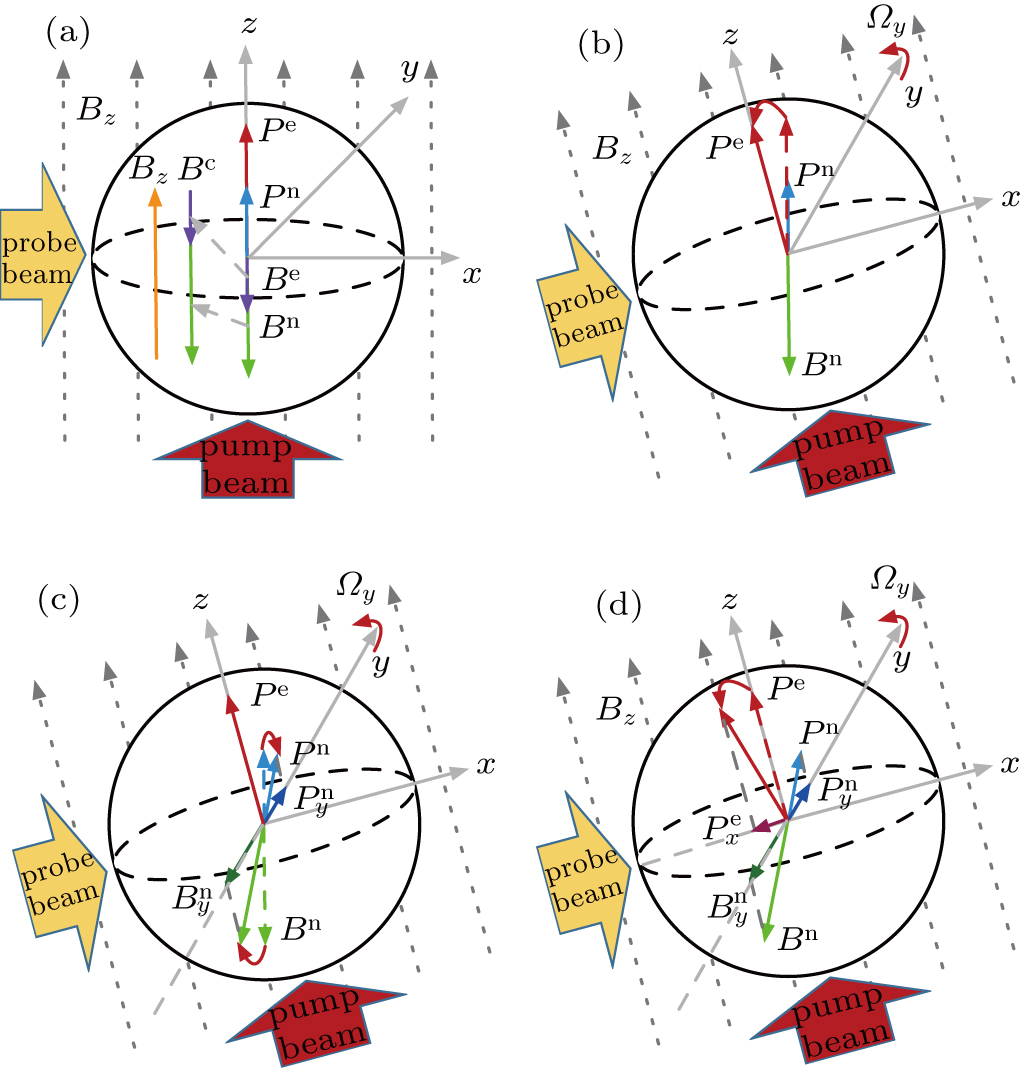|
Lu Yan1, Zhai Yueyang2, 3, 4, Zhang Yong1, Fan Wenfeng1, Xing Li1, Quan Wei2, 3, 4, †
|
Intuitive model of the operation principle: (a) Rb and 21Ne achieve polarization equilibrium, then the comagnetometer is set to the self-compensated state with Bz = −B2c = −(Bn + Be); (b) when there is a rotation rate input Ωy, the Rb electron spins are quickly repolarized, while the 21Ne nuclear spins remain oriented with respect to an inertial frame; (c) under the torque of magnetic field Bz on 21Ne nuclear spins, Pn and, accordingly, Bn rotate around the z-axis, resulting in a y-component of the nuclear magnetic field
Byn; (d) under the torque of magnetic field
Byn on Rb electron spins, Pe rotates and projects onto the x-axis. Then, the x-component
Pxe is detected by the linearly polarized probe light. |
